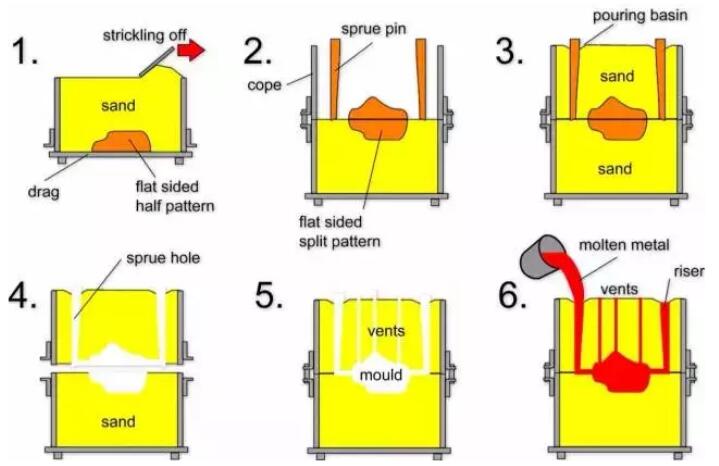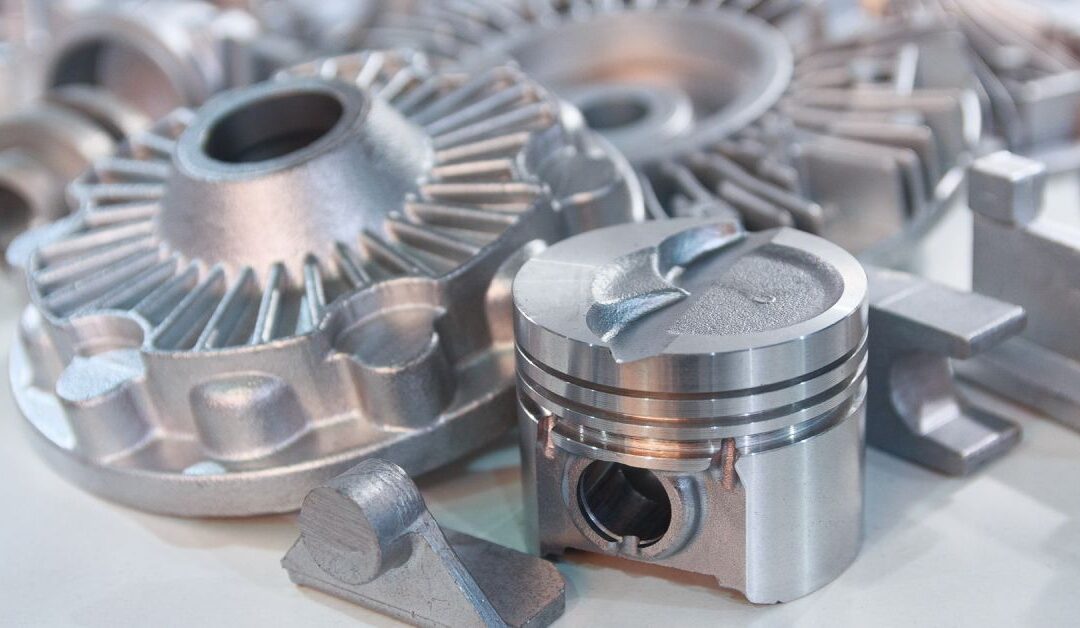Exploring how Aluminum Foundry methods improve efficiency across industries
Wiki Article
A Deep Study the Different Sorts Of Metal Casting and Their Makes use of
Metal Casting incorporates numerous techniques, each tailored for details applications and needs. From the cost-effective sand spreading technique to the precision of investment spreading, each process has unique benefits. Die casting sticks out in high-volume manufacturing scenarios, while shed foam spreading introduces cutting-edge layout possibilities. Additionally, irreversible mold and mildew spreading is recognized for its toughness. Understanding these approaches opens a window right into their functional uses and implications in numerous sectors. What lies beneath the surface of these casting strategies?Sand Casting: A Affordable and flexible Technique
Numerous casting methods exist, sand spreading continues to be one of the most flexible and affordable methods in the metalworking market. This method uses a blend of sand and a binding representative to create molds, enabling the production of parts in varied shapes and sizes. Sand spreading is specifically beneficial for small to medium manufacturing runs, as it calls for very little ahead of time financial investment in tooling contrasted to various other spreading strategies.The procedure begins with the development of a mold, where molten metal is put in to develop the desired things once cooled down. Its flexibility allows using different metals, consisting of iron, light weight aluminum, and steel. Additionally, sand spreading can accommodate complex geometries, making it appropriate for a variety of applications, from automobile parts to complex imaginative items. In general, sand spreading's effectiveness and versatility strengthen its relevance in the manufacturing landscape.
Investment Casting: Accuracy and Information for Intricate Forms
Financial investment spreading attracts attention as a technique renowned for its capability to produce extremely detailed and intricate parts. This process entails developing a wax pattern that is coated with a ceramic covering, which is then heated to remove the wax and solidify the covering. The outcome is a specific mold that can capture complicated geometrical forms with impressive precision.This spreading strategy is specifically helpful for creating components with slim walls, great features, and limited resistances, making it optimal for sectors such as aerospace, auto, and medical tools. Investment casting suits a variety of steels, including stainless steel, aluminum, and titanium, making it possible for makers to meet particular product needs.
The procedure reduces machining requirements post-casting, which can improve performance and lower production costs. In general, financial investment casting is a favored choice for applications where precision and information are critical.
Die Casting: High-Volume Manufacturing With Excellent Surface Complete

Pass away spreading is a highly reliable production procedure that masters generating large volumes of metal parts with remarkable surface finishes. This approach includes forcing liquified steel right into a mold and mildew dental caries under high stress, permitting rapid manufacturing cycles and harmony in the ended up products. Commonly utilized products consist of aluminum, magnesium, and zinc, which use exceptional mechanical properties and corrosion resistance.
Die casting is specifically valuable for sectors such as automobile, electronic devices, and durable goods, where accuracy and top quality are critical. The process allows elaborate styles, minimizing the requirement for added machining and finishing procedures. Furthermore, the smooth surfaces created through die spreading commonly call for marginal post-processing, causing lower overall manufacturing costs. As a high-volume manufacturing technique, die casting is excellent for manufacturers looking for efficiency without endangering on top quality, making it a favored visit this website choice for plenty of applications throughout different sectors.
Lost Foam Casting: Innovative Technique for Intricate Designs
Lost foam spreading transforms the production of complicated metal parts by utilizing a distinct process that removes the need for traditional molds. As opposed to conventional mold-making, this technique uses a foam pattern that is coated with a refractory product. When the pattern is established, liquified metal is put straight into the mold, triggering the foam to vaporize and leave behind an accurate cavity for the metal to load. This cutting-edge method enables for detailed layouts and detailed features that might be challenging to attain with various other casting techniques.Additionally, shed foam casting can minimize waste and power intake, making it an eco-friendly alternative. Industries such as aerospace and vehicle benefit considerably from this technique, as it sustains the creation of light-weight components with complex geometries. On the whole, shed foam casting attracts attention for its capacity to provide premium, personalized steel parts efficiently.
Irreversible Mold Casting: Longevity and Consistency in Steel Components
Permanent mold and mildew spreading is a very effective approach for creating regular and long lasting steel parts, leveraging multiple-use molds that are normally made from metals such as iron or steel. This spreading procedure includes putting molten metal into these molds, which are preheated to improve product quality and decrease problems. Making use of recyclable mold and mildews not only reduces waste however likewise enables greater production rates, making it economically helpful for suppliers.The resulting parts show exceptional dimensional precision and surface coating, making them perfect for applications in auto, aerospace, and industrial equipment. see this website Furthermore, long-term mold and mildew spreading can fit a selection of alloys, additionally broadening its adaptability. The resilience of the actors components is boosted due to the regulated air conditioning prices that advertise better grain structures. In general, this casting technique stands apart for its ability to create top notch steel components that fulfill strenuous performance requirements, making certain dependability in requiring settings.
Frequently Asked Concerns
What Materials Can Be Made Use Of in Different Steel Casting Processes?

Various products can be used in Metal Casting processes, including aluminum, zinc, iron, and bronze. Each material supplies distinct residential properties, influencing the casting technique's effectiveness, stamina, and suitability for different applications in production.
Just How Do Casting Techniques Affect the Mechanical Characteristics of Metals?
Casting approaches significantly affect the mechanical buildings of metals, affecting factors like firmness, ductility, and stamina. Variations in cooling rates and mold and mildew products can cause various microstructures, ultimately affecting the efficiency of the final item.What Are the Environmental Effects of Steel Casting Processes?
Metal Casting procedures can result in air and water pollution, source depletion, and substantial power consumption (Metal Castings). In addition, the generation of waste materials and greenhouse gas emissions substantially adds and impacts the environment Your Domain Name to environment adjustmentHow Do You Select the Right Spreading Technique for a Job?
Picking the ideal spreading method involves examining job demands, material residential properties, complexity, and manufacturing quantity. Aspects like expense efficiency, surface high quality, and lead time additionally play crucial roles in determining the most appropriate technique.What Safety and security Precautions Should Be Taken During Metal Casting Operations?
During Metal Casting operations, safety precautions consist of using protective equipment, guaranteeing correct ventilation, performing tools evaluations, keeping a clean office, and having emergency situation protocols in position to take care of potential risks like burns or harmful fumes.From the cost-effective sand spreading approach to the precision of financial investment spreading, each procedure has unique advantages. Die casting is a very efficient manufacturing process that stands out in generating large volumes of steel parts with phenomenal surface area finishes. Lost foam spreading revolutionizes the manufacturing of complex metal parts by making use of an unique procedure that eliminates the need for typical mold and mildews (Aluminum Castings). Irreversible mold casting is an extremely reliable technique for generating durable and consistent metal components, leveraging reusable molds that are generally made from metals such as iron or steel. Different products can be used in Metal Casting processes, including light weight aluminum, zinc, iron, and bronze
Report this wiki page